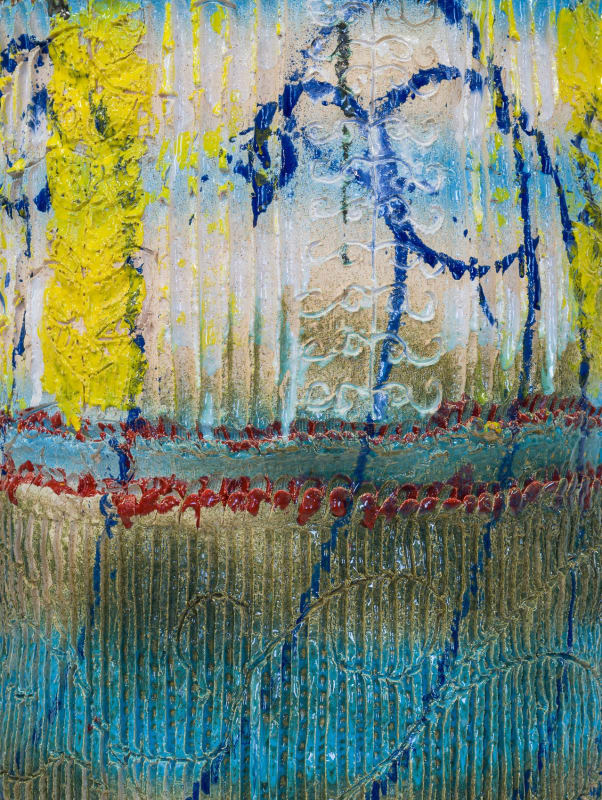In the exhibition Structures of Accelerations / Systems of Repetitions Mikkel Ørsted presents large-scale ceramic works and paintings balancing decorative and abstract aesthetics. Ørsted insists on challenging the boundaries of materiality and new systems and visualities appear in the mist of recognizable organic forms and unknown chemical processes.
From wall to wall across the gallery space, ceramics in various sizes with organic forms, spiky collars, striped glaze, and glittery edge bandings stand on an industrial iron platform that Ørsted has created specifically for the exhibition. The works all stem from the ton clay Ørsted has molded and shaped within the last year in the workshop at his childhood home in Odsherred, Denmark. Here nature, craftsmanship, and art are grown together and the legacy of the Danish physicist H.C.Ørsted, to whom Mikkel Ørsted is related, exists as much in his fathers blacksmith's/inventor workshop, his pedagogical upbringing, and within the surrounding nature tracks where philosophical thoughts and new inner landscapes appear.
The exhibition Structures of Accelerations / Systems of Repetitions come about as a curiosity about the physicality of the world -- questioning what it means to build up forms and aesthetics, to scrap them away and see new ones arise between ones sore hands and broken skin. Like the scientific practice of H.C.Ørsted, the artist's practice is a search into the unknown – where the world’s structures and systems appear when you look close enough.
The ceramic works are reminiscent of classical vessels. Still, they do not have a clear beginning, opening or ending – but exist both on the outside, inside and in relation to one another. This is essential to Ørsted as he insists on an open dialogue with the works that makes room for uncertainty in the proces. When burning his ceramics, the aesthetics come about spontaneously and intuitively, and they are created in the blind imagination as they change within the chemical process. The heat and strength of the hands that build, the weather during the drying period, and the thickness of the painted glaze, that only turns to glass and color in the end, all affect the final result. For Ørsted this is a welcome challenge where the materials give something of great value back to him.
The ceramics align with Ørsted’s painting method – where many layers, materials and forms are connected as single entities or particles within a larger system beyond the canvas. By repeating his signature lines, detailed airbrush and fast-paced abstract brushstrokes – Ørsted weaves clay, iron, canvas, wood and pigments together.








